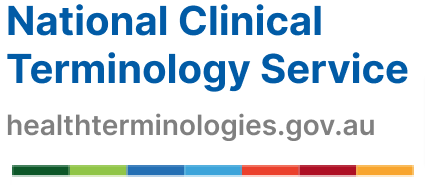File types and subsets
The NCTS terminology products are available in a many formats. This improves accessibility and adoption of SNOMED CT and other terminologies by a broad range of users.
What file types are available?
We publish terminologies in many formats to support our broad range of users. The files that are most suitable to download will depend on your use case and requirements.
Exploring SNOMED CT content
Access processed TSV or CSV files to analyse content
 These files contain subsets of SNOMED CT content.
These files contain subsets of SNOMED CT content. They contain identifiers and descriptions for each concept.
They contain identifiers and descriptions for each concept. Clinicians and other non-technical users can import these files into common spreadsheet applications.
Clinicians and other non-technical users can import these files into common spreadsheet applications. May be suitable for applications that can only consume limited amounts of data.
May be suitable for applications that can only consume limited amounts of data.
The Shrimp terminology browser is an online tool that helps users explore SNOMED CT content. Users do not need an account and it is free for use. However it is not suitable for assessing many concepts at once. For example, you may want the list of members in the Australian Emergency Department reference.
To support clinicians and other non-technical users, we process the native SNOMED CT RF2 files and publish them in a TSV or CSV format. These are easily imported into common spreadsheet applications. They contain identifiers and descriptions for each concept.
The type of content available include:
- SNOMED CT-AU reference sets only containing active members
- changes between SNOMED CT-AU releases
- support navigation between different AMT product classes
Implementing in software
Applications should use terminology services or native SNOMED CT RF2 files
 Developers can choose the most suitable technology for your requirements and use cases.
Developers can choose the most suitable technology for your requirements and use cases. Delegate terminology services to the National Clinical Terminology Service (NCTS).
Delegate terminology services to the National Clinical Terminology Service (NCTS). Harness the full power of SNOMED CT from the native distribution files.
Harness the full power of SNOMED CT from the native distribution files.
The National Clinical Terminology Service (NCTS) provides tools and guidance for software developers to assist with the management of terminology within your own environment.
As a National Release Centre for SNOMED International, we publish native SNOMED CT RF2 distribution files. We also make FHIR terminology resources available via the NCTS. We encourage vendors and implementers to use our terminology services where possible to avoid the duplicated effort of understanding SNOMED CT. This approach will also help to insulate from possible future change.
How do file types relate to subsets?
Subsets are usually a group of codes that come from one or more terminologies, such as SNOMED CT, LOINC, or ICD.
Bundling useful codes into the same package for a specific use case provides value. This is why they are sometimes described as ‘value sets’. Examples of subsets include:
- Days of the week
- Reasons for presentation, presenting problems and diagnoses within emergency department settings
- Procedures for diagnostic imaging
- Vaccines available in the AMT
Subsets are available from the NCTS in these formats:
Reference sets: contain only SNOMED CT components and conform to the SNOMED CT specification. They are available as part of the native SNOMED CT-AU release for software developers. They are also published as TSV files for clinicians and other non-technical users.
ValueSets: terminology resource type that conforms to the FHIR specification. They are stored within a terminology server and accessed through FHIR APIs.
FHIR supports SNOMED CT-AU reference sets, which can be represented as FHIR ValueSets. Yet the opposite is not true, because not all value sets are represented as a SNOMED CT-AU reference set.
As above, the type of subset you choose will depend on whether you are using the files to explore the content, implementing the native SNOMED CT RF2 files in your system, or accessing terminology services.
